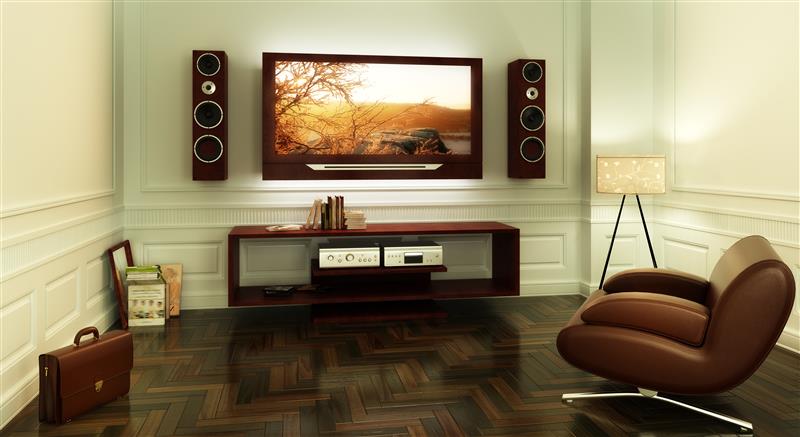
HIDING CABLES IN THE WALL – PRACTICAL SOLUTIONS FOR A CLEAN SETUP
Share
 A tidy home or office not only creates a pleasant atmosphere but also enhances safety. Loose cables and messy cable clutter are not only unsightly but can also become tripping hazards. Especially with TVs, home entertainment systems, or desk setups, many cables often accumulate, disrupting the overall look. In this article, we will show various methods to hide cables in the wall or in other ways, keeping living and workspaces neat and organized.
A tidy home or office not only creates a pleasant atmosphere but also enhances safety. Loose cables and messy cable clutter are not only unsightly but can also become tripping hazards. Especially with TVs, home entertainment systems, or desk setups, many cables often accumulate, disrupting the overall look. In this article, we will show various methods to hide cables in the wall or in other ways, keeping living and workspaces neat and organized.
Why should you hide cables?
Loose cables are not only visually disturbing but also have practical and safety-related disadvantages:
- Clutter and chaos: Cables piling up on the floor or behind furniture create an untidy impression.
- Safety hazard: Exposed cables can become tripping hazards or get damaged, potentially leading to short circuits.
- Cleaning difficulties: Dust accumulates quickly in and around cable bundles, making cleaning more challenging.
- Increased comfort: Especially at a desk or in a home office, proper cable management is essential for a comfortable working environment.
The best methods to hide cables in the wall
There are several solutions to make cables invisible or at least less noticeable. Depending on the effort and budget, you can choose between different options.
1. Installing in-wall conduits or cable ducts
The most elegant solution is to embed cables directly into the wall. This method is particularly suitable for new constructions or renovation projects, as it requires structural modifications.
Advantages:
- Perfectly invisible cable management
- Durable and secure solution
- Increases the resale value of a property
Disadvantages:
- Relatively high labor effort
- Difficult to make changes later
How it works:
- Planning: Before installation, carefully consider which cables are needed (e.g., power, HDMI, network cables).
- Cutting wall grooves: Use a wall chaser to create channels in the wall for the cables.
- Installing conduits or ducts: These protect the cables and allow for future upgrades.
- Running the cables: Pull the required cables through the conduits.
- Sealing and plastering the wall: Once finished, close up the wall and repaint.
2. Cable ducts: Practical, easy, and quick
If in-wall installation is not possible or desired, cable ducts are a practical alternative. They can be discreetly routed along the wall and color-matched.
Advantages:
- Easy to install
- Cost-effective solution
- Flexible and can be added later
Disadvantages:
- Not completely invisible
Installation:
- Ducts are attached to the wall using screws or double-sided adhesive tape.
- The cables are then placed inside and the duct is covered.
- If necessary, the duct can be painted in the wall color to make it less noticeable.
3. Cable boxes – the tidy solution
A practical way to hide power strips and excess cables is with cable boxes. They provide space for multiple sockets and longer cables, such as speaker cables, keeping everything neat and secure.
Advantages:
- No complex installation required
- Improves safety
- Suitable for various applications
4. Cable sleeves or spirals
Flexible cable sleeves or spirals bundle multiple cables into a single strand and can be easily routed behind furniture or along walls.
Advantages:
- Quick to implement
- Affordable solution
- Easy to modify
Disadvantages:
- Cables are not completely invisible
5. Hiding cables behind furniture or in specialized TV wall mounts
Many modern furniture pieces offer built-in cable management. Especially for TV wall mounts, there are solutions with integrated cable ducts that keep all cables hidden.
Frequently Asked Questions (FAQ)
How can you hide cables on the wall?
- The best solutions are in-wall conduits or cable ducts.
- Alternatively, cable ducts can be mounted on the wall and color-matched.
- Furniture or specialized TV mounts with built-in cable management also help.
How can you hide cables behind a TV?
- The best solution is a wall mount with integrated cable management.
- If the TV is on a stand, cable ducts or cable sleeves can be used.
- Power strips can be hidden behind TV cabinets or in cable boxes.
How can I hide cables on the floor?
- Cable bridges or floor cable ducts ensure safe and tidy routing.
- Carpets or special baseboards with cable channels also help.
- Wireless solutions like Wi-Fi devices reduce the need for floor cables.
Conclusion
A tidy setup with hidden cables creates an aesthetic and safe living and working environment. The right method depends on the structural conditions, budget, and personal needs. Whether it's an elegant in-wall solution, simple cable ducts, or hidden routing behind furniture – there are suitable options for every situation. With the tips provided here, cable management can be improved, creating a more pleasant atmosphere.
